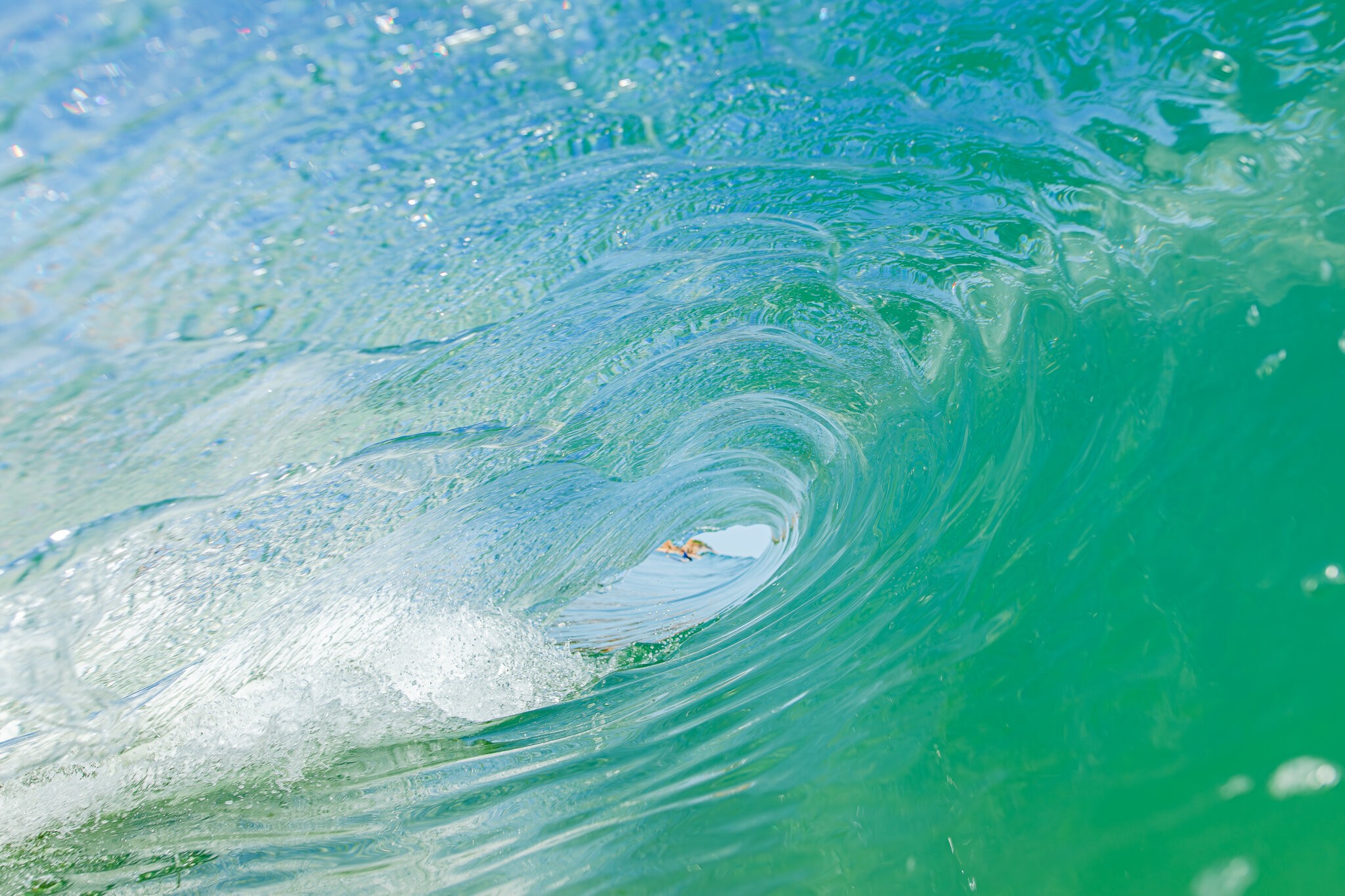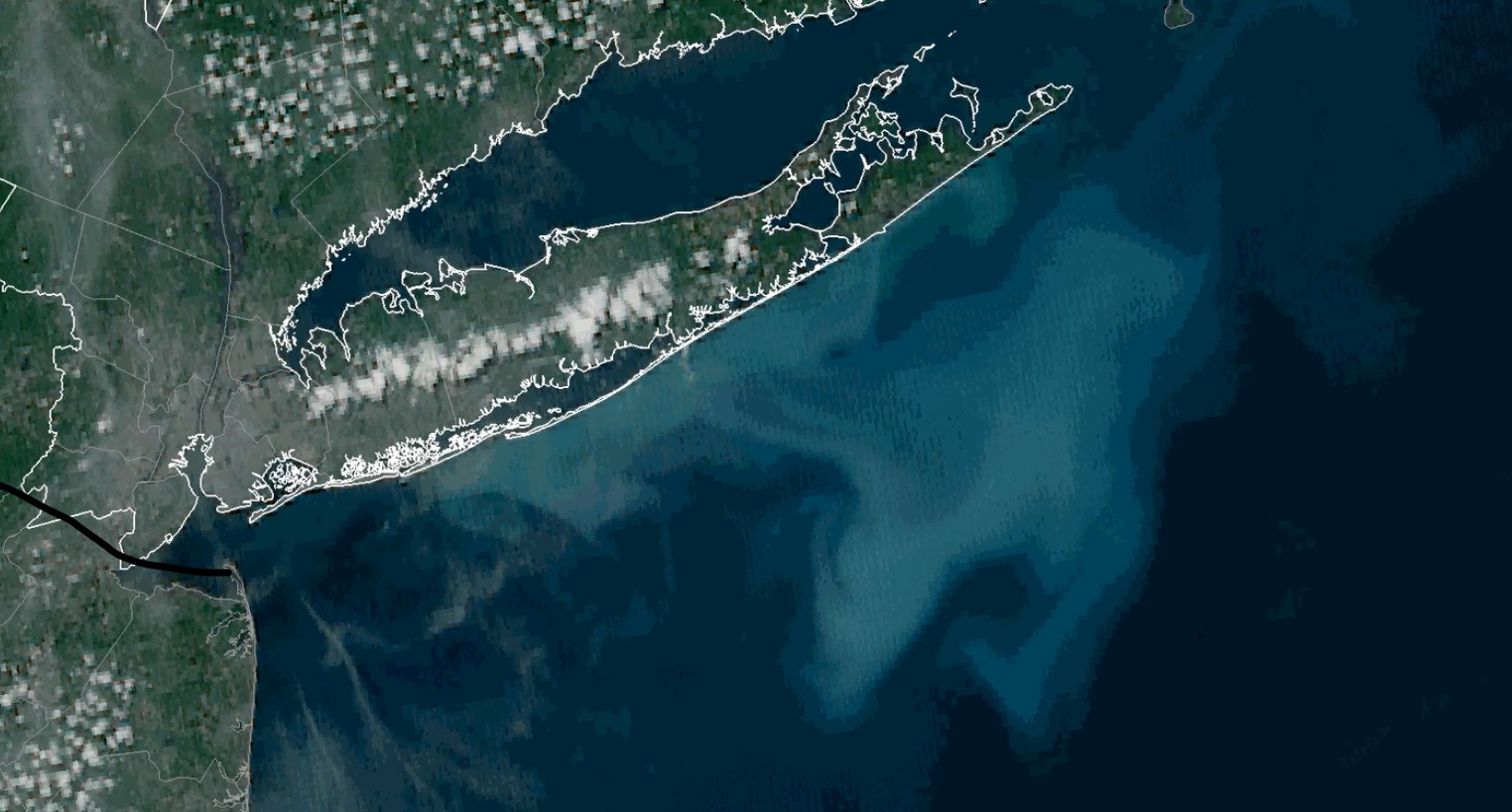Blue Bays: East End Abuzz with Caribbean-esque Waters, But Cause Not So Pretty

Some East End residents enjoying a day at the beach or on a boat could be forgiven if they thought they were magically transported to the Caribbean on a recent summer day.
That’s because the waters around the Hamptons and the North Fork had turned an unusually turquoise hue in recent weeks. Although many took it as a welcome change from the usual green tint to the water in the Atlantic Ocean and the bays across the region, the cause was a not-so-welcome common culprit: an algae bloom — a unique phytoplankton known as coccolithophores.
“The bloom is attributed to the recent bout of thunderstorms and heavy precipitation over the past few weeks across the region, which has caused a significant runoff of nutrients; mainly nitrogen into the waterways,” the National Weather Service stated. “The nitrogen surge is creating low-oxygen dead zones and a potentially harmful algal bloom just offshore in the Atlantic Ocean.”
Coccolithophore blooms occur around the world, but what makes them unique is their color which is unusual in the phytoplankton world.
“The most distinct trait of coccolithophore is that they have a shell that is made of calcium carbonate — they’re the only group of phytoplankton that has that,” Christopher Gobler, a water quality expert and professor in the School of Marine and Atmospheric Sciences at Stony Brook University, told 27East.com
While undeniably beautiful, the long-term implications of this phenomenon are yet to be determined. Scientists are closely monitoring the situation to understand the cause and potential consequences on the marine ecosystem.
These marine phytoplankton appear to play a significant role in the global carbon cycle, as they absorb carbon dioxide during photosynthesis and contribute to the formation of marine sediments when they die and their coccoliths settle on the ocean floor. Coccolithophores thrive in various marine environments, from coastal waters to the open ocean, and their blooms can influence oceanic albedo, affecting the Earth’s climate. They are crucial in marine ecosystems, serving as a primary food source for various marine organisms.
Satellite images released by the National Atmospheric and Oceanic Administration show that the bloom stretched from the Twin Forks as far west as Long Beach. It appeared to peak around Independence Day weekend.

“In the past week it’s kind of decreased in its intensity,” an Upton-based NWS meteorologist monitoring the satellite data told Dan’s Papers.
Although the blueish tint gave the waters the appearance of tropicality, the bloom lacked the visibility of the actual Caribbean Sea. Like the brown tides that nitrogen pollution has caused in the bays over the years, the coccolithophore bloom is not easy to see through. But it remains to be seen what kind of effect the bloom may have on local marine wildlife; the collapse of Long Island’s shellfishing industry decades ago was attributed to brown tides caused by Suffolk County’s overreliance on cesspools and widesprad lack of sewers.
But some Hamptonites are looking on the bright side.
“It’s crystal blue with a cool temperature,” said Elise Williams of East Hampton. “It’s perfect for a refreshing dip during this very humid week.”
Over at Ponquogue Beach in Hampton Bays, beachgoer Lee Bravakos also liked how it looked.
“It changes day to day,” he noted. “You can tell better when you are underwater.”
Some boaters agree.
“Shinnecock looks like South Florida today,” an angler commented in a Facebook group dedicated to boating on Long Island. “I’ve never seen the bay this blue.”
And the bloom coming just as peak beach season kicks off in late June and early July — coinciding with a heat wave that sent crowds to the beach seeking to cool off — made the images of light-blue water around the East End all the buzz on social media, with plenty of shutterbugs snapping photos of the beautiful bloom.
This would not be the first time tropical troubles have reached Hamptons shores in recent years. Last summer saw a spate of swimmers being bitten by sharks — mostly on Fire Island, but one in Quogue on the Fourth of July in 2023. There have been a few sightings at upisland beaches recently, but the coast has been clear so far this summer off the Twin Forks.
It is unclear how much longer the bloom is likely to last, but locals can rest assured that the phenomenon appears to be only temporary.
–With Timothy Bolger



